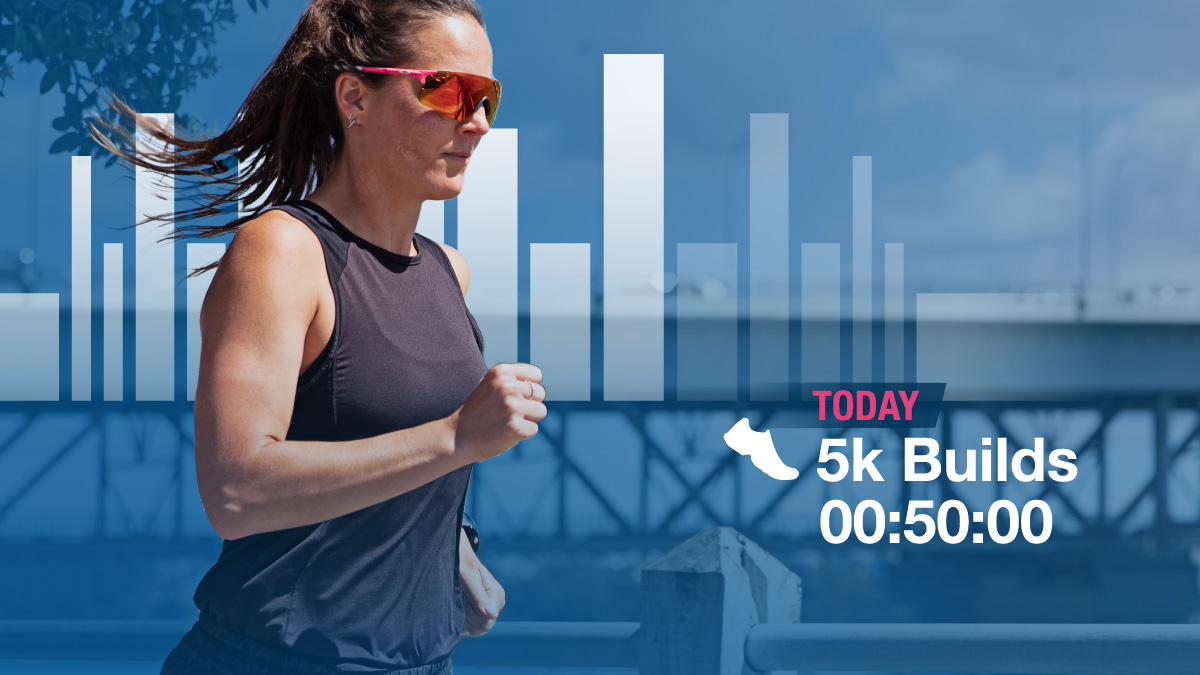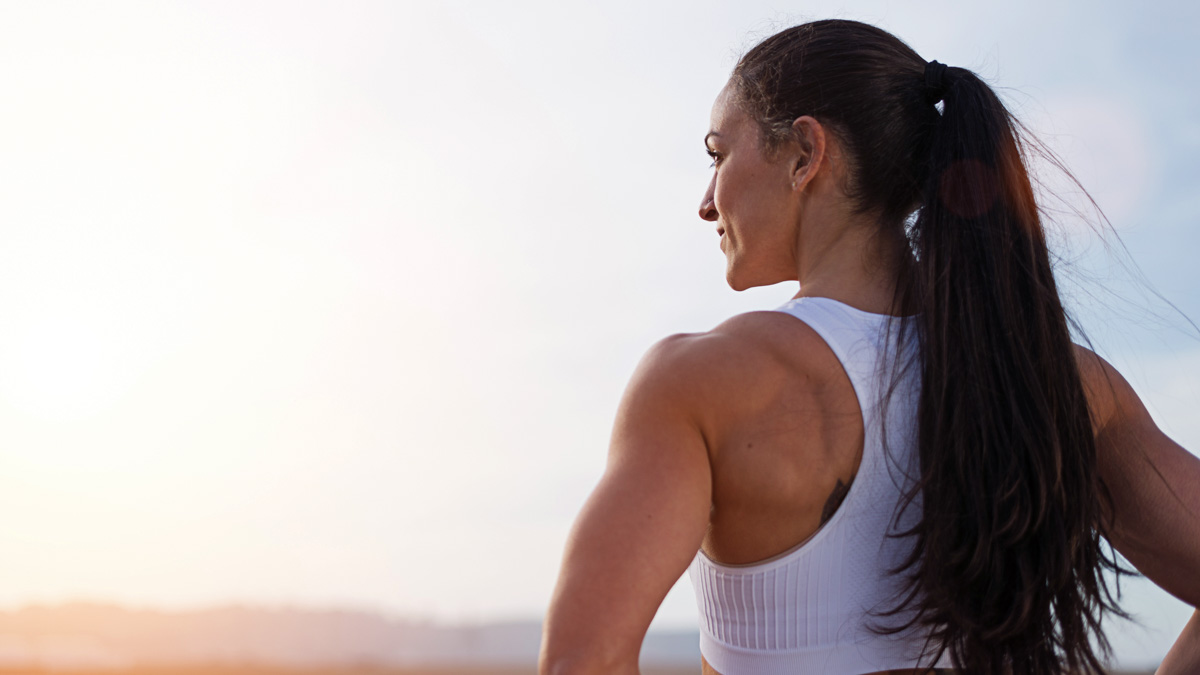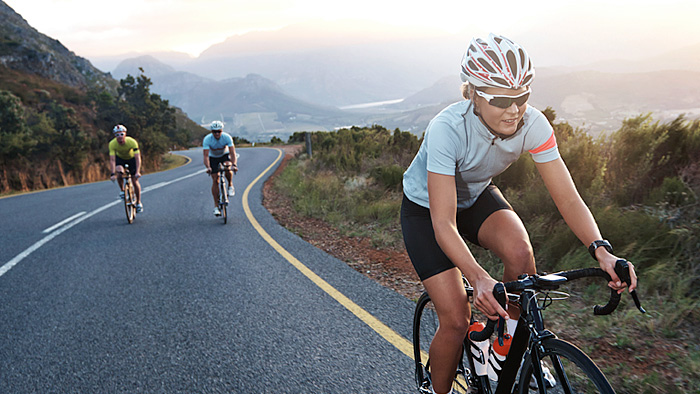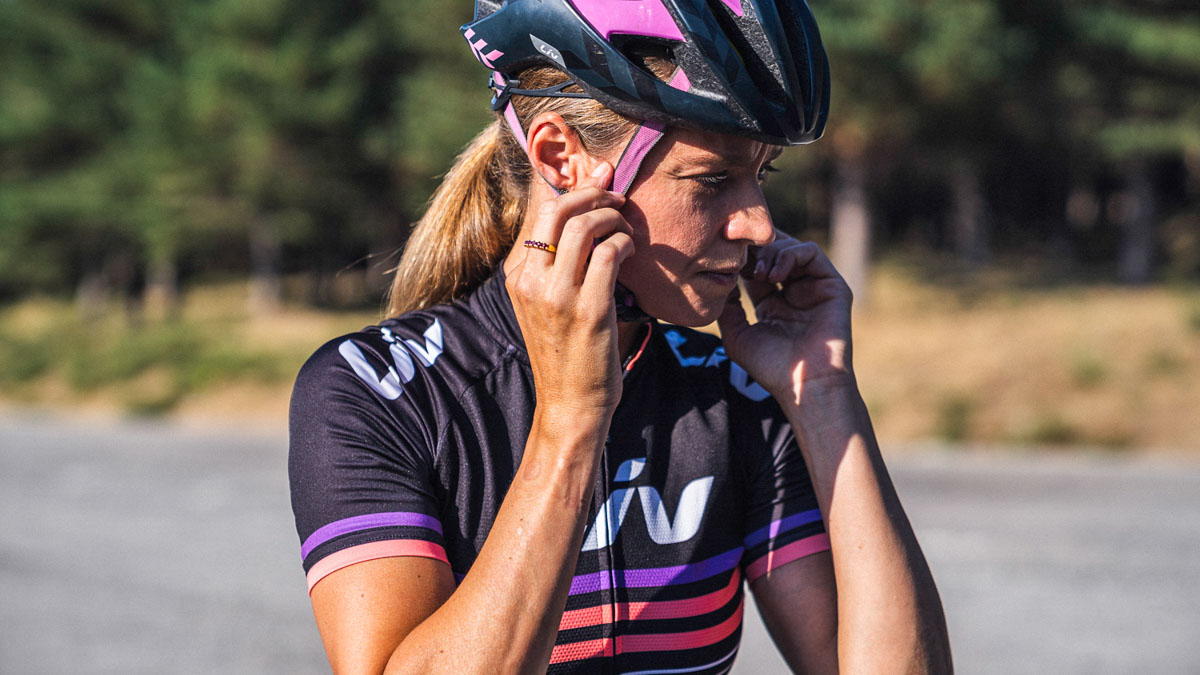
We’re all endowed with different breasts. Some women can slide a cell phone into their cleavage on the bike, while others barely feel they need a bra. No matter your shape or size, your breasts are going to bounce when you run. And 40 years of research shows that most women (even if they’re wearing a sports bra) occasionally experience breast pain and chafing during exercise.
Breasts that hurt with every bounce are not conducive to a PR – they hurt performance and in some cases keep women from running in the first place. This is why finding a functional sports bra is imperative for all women athletes. Here’s how to select a perfect-fitting sports bra that won’t hold you back during a run, on the bike, in the gym, or anywhere else.
Sports Bras: An Essential Piece of Sporting Equipment
We’ve come a long way from the first sports bra invented in 1978 when Lisa Lindahl, Hinda Miller, and Polly Smith sewed two jockstraps together (seriously!). And scientists have been conducting fairly extensive biomechanical research over the past decade in an attempt to improve sports bra design. But injuries and pain persist. A well-fitted and supportive sports bra should be an essential piece of sporting equipment. But even so, few sporting organizations, sports medicine associations, or public health education programs, provide evidence-based guidelines on breast support for active women.
Thankfully some researchers have started to lead the charge in helping women exercise without breast pain. One of these women is Dr. Julia Alleyne, a longtime Sports Medicine Physician and associate professor at the University of Toronto, Department of Family and Community Medicine, who was honored by the Canadian Association for the Advancement of Women in Sport and Physical Activity.
How A Sports Bra Works
A common misconception is that exercise causes breasts to sag. According to Dr. Julia Alleyne, however, “the only ligaments in the breast (Cooper’s Ligament) hold the central breast to the chest wall. They are very strong and function as suspension support. They do not easily tear as they are flexible.”That said, a properly-fitting sports bra keeps bouncing to a minimum and helps you avoid other common breast-related exercise woes such as chafing, abrasions, bruising, contusions, tenderness, and soreness.
The 3 Types of Sports Bras
Sports bras fall into one of three categories: compression, encapsulation or encapsulation-compression.
Compression sports bras hold your breasts in place by compressing them or pushing them against your body. These bras can be quite comfortable and work well for women with smaller breasts. Some compression sports bras will work for larger busts, but they can also cause a “uniboob,” which can lead to more chafing. If you have a large chest, consider encapsulation sports bras instead.
Encapsulation sports bras have a cup for each breast that separates your breasts and holds them in place (sometimes, but not always with an underwire). These are ideal for runners because they eliminate bounce and reduce strain.
Encapsulation-compression sports bras push your breasts against your body and keep them fixed in the space of the individual cups. Encapsulation-compression bras work well for athletes of all sizes, especially women with larger breasts. These bras tend to have underwires, which offer structure and support.
How to Pick the Perfect Sports Bra
1. Find the Best Overall Fit
Seek out the best overall fit for comfort. Look for bras that are supportive, seamless, sweat-absorbent, and provide compression. They should be ventilated, made with a porous fabric, and provide scapular reinforcement. A sports bra should be snug, but not too tight. It should fit tighter than a regular bra but shouldn’t restrict breathing; you should be able to fit two fingers between the straps and your shoulders. The fabric of the cup should be smooth (not wrinkled). Wrinkles in the fabric are usually an indication that the cup is too big. Bras that are “worn in” should be tossed out!
2. Prevent Bruising
To minimize shoulder bruising find a bra with wider shoulder straps and/or add strap pads. For anterior breast bruising use less anterior compression – try an encapsulation or encapsulation-compression combination style.
3. Minimize Chafing
The likelihood of chafing increases with moisture (as in coming out of the water and then sweating profusely while biking and running!). Ensure proper size and wear bras made of absorbent fabric to help decrease chafing. Seamless bras and barrier creams may help nipple and underarm chafing. For underwire chafing, ensure that the underwire is sitting flat against your sternum and ribcage, rather than against breast tissue. When experiencing chafing under your breasts along the rib cage, or near the hook and eye clasp, tighten the band as much as you can comfortably.
4. Get fitted often!
Breasts change with puberty, pregnancy, weight loss or gain, after breast augmentation and/or reconstruction, through the menopause transition, and for other reasons. Dr. Julie recommends getting fitted (at least) annually. See the end of this article for practical links on finding sports bras for your current needs!
We can encourage breast care by beginning to normalize these kinds of conversations, starting at a young age. It is also important to acknowledge that bras are often quite expensive. Let’s advocate for more research and education and more inclusive options for bodies and breasts of all sizes and at all price points. Research and support companies and causes that help all women and girls in sport best support our breasts!
Helpful Links:
NOTE: None of these brands are endorsed by Feisty Triathlon or TrainingPeaks.
For women in triathlon (all sizes): https://www.brabbly.com/best-bras-for-triathlon/
For runners (all sizes): https://www.runnersworld.com/uk/gear/clothes/a775937/16-best-running-sports-bras/
For women with large breasts: https://www.womenshealthmag.com/uk/gym-wear/g25304174/best-sports-bras-large-breasts/
For small breasts: https://brasforsmallcups.com/best-sports-bras-for-small-boobs/
For triathletes in larger bodies: https://www.self.com/gallery/plus-size-sports-bras
Maternity & Nursing: https://www.scarymommy.com/spotted/maternity-sports-bras
Post-mastectomy sports bras: https://www.afittingexperience.com/7-of-our-softest-mastectomy-sports-bra/
After breast augmentation: https://thewiredrunner.com/best-sports-bras-for-implants/
To support women in need of sports bras: https://isupportthegirls.org/, www.thesportsbraproject.org, & https://www.oiselle.com/pages/bras-for-girls
To recycle old bras: https://www.greenmatters.com/p/donate-bras; https://brightly.eco/where-to-donate-bras/
References
National Inventors Hall of Fame. (2022). Lisa Lindahl. Retrieved from https://www.invent.org/inductees/lisa-lindahl
Julia, A. (2021, October 2021). Breast Care for Athletes Starts with Finding Your Personal Fit. Retrieved from https://www.instagram.com/p/CVadNZNAlM0/?igshid=YmM0MjE2YWMzOA%3D%3D
This article originally appeared on Feisty Triathlon. Edited for TrainingPeaks.








